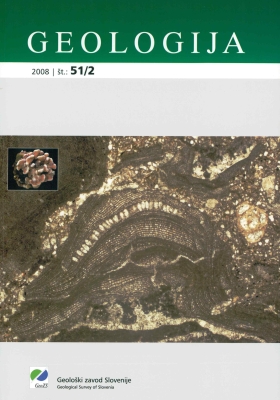Structural aspect on the Slano blato landslide (Slovenia)
DOI:
https://doi.org/10.5474/geologija.2008.023Abstract
The active landslide Slano blato above Lokavec in the Vipava valley, Slovenia, is a complex phenomenon. The hinterland of the landslide consists of the large fossil block of Mala Gora that slid about 300 m down the slope of Mt. Čaven, and was tilted with respect to the slope. We presume that the corresponding failure surface is concavely shaped. The block consist in its lower part of Eocene flysch beds and in its upper part of Triassic carbonate rocks that are thrust over the flysch. It is probable that due to gravitational slumping the flysch basement obtained a concave shape, that serves as a catchment structure for retaining the ground water. It slowly percolates through the crushed calcarenitic layers in flysch. According to available data the Slano blato was triggered in 1887 by earthworks, and in 2000 by natural erosion processes. The structural characteristics allow the assumption that movement occurs in crushed and weathered flysch beds that are percolated by a steady or periodical supply of groundwater from the structural reservoir in the Mala Gora fossil slumped block. Coexistence of the older structural and the younger active weathered material landslides can be observed also at other localities along the thrust front of the Trnovo and Hrušica (Nanos) nappe. Especially interesting in this respect are the Razdrto and Strane landslides.Downloads
How to Cite
Placer, L., Jež, J., & Atanackov, J. (2008). Structural aspect on the Slano blato landslide (Slovenia). Geologija, 51(2), 229–234. https://doi.org/10.5474/geologija.2008.023
Issue
Section
Articles

